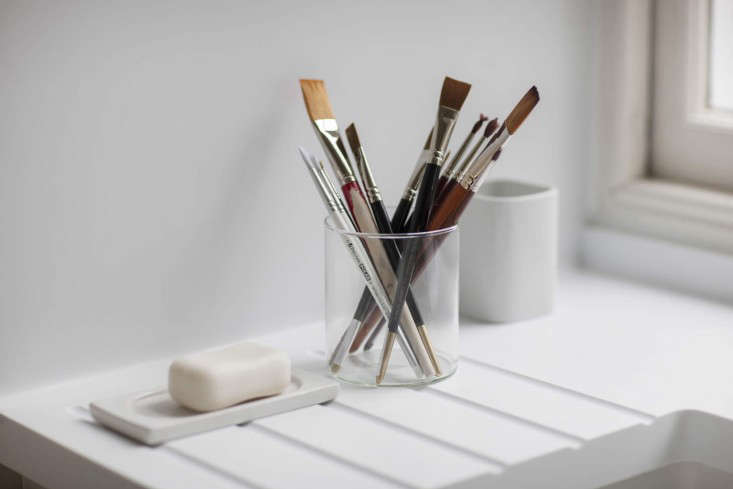Thursday, January 12, 2017
Remodeling 101: How To Patch Nail Holes, Tips from a Master Painter

1. Remove nails gently.
Try first with your hands before getting out a hammer or pliers.

2. Assess the damage.
If it’s a pin-size hole on a white wall, you can likely get away with simply covering it up with a touch of filler or paint applied with a Q-tip. (For paint tips, see below.) But if the hole is noticeable, you have to plug it. Albert recommends spackling or caulk or Elmer’s Wood Glue, and you can use your finger to work it in and then level it. Some people use white toothpaste; Albert says, “Don’t go there. You need a material that adheres and doesn’t crack.”
3. Even the surface with a damp cloth.
“You don’t want a blob,” notes Albert. “The key is to just cover up the hole, not the area around it or you’ll end up with a splotchy patch.”
4. Let completely dry and then gently smooth with a fine grit sandpaper.
If your compound has shrunk, you may need to apply a second coat.
Above: Artist’s brushes come in handy for delicately painting over filled nail holes. Photograph by Angus Bremner from A Georgian Townhouse Remodeled for an Artist.
5. Match the paint.
A tiny patch can be covered up with paint that’s the same color and finish as the wall. Apply it with an artist’s paintbrush or a Q-tip—”use one side to dab it on and the other to soften it out,” says Albert. A larger patch often requires a bit more finessing because wall colors weather and age over time: Consider adding a bit of colored tint, such as burnt umber or dark beige blended into the original (bring a sample, if possible, or a photo and your paint store will help). Tip: When painting walls, put aside a small labeled can or bottle to keep on hand as touch-up paint.
6. Tackle nail holes on wooden doors and paneled walls much the same way.
Plug the hole and then camouflage it. Albert uses Minwax Stain Markers: They touch up patches and nicks—until next year, when you deck the halls again.
This article was written by Margot Guralnick from Remodelista and was legally licensed through the NewsCred publisher network.